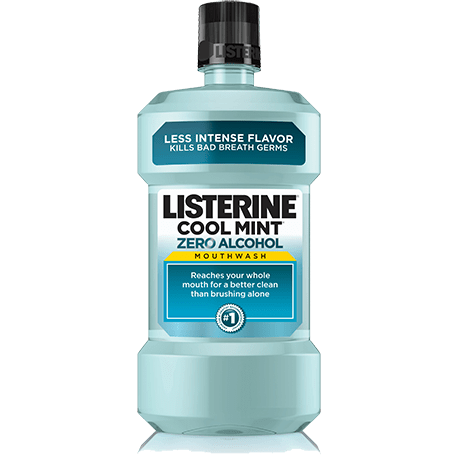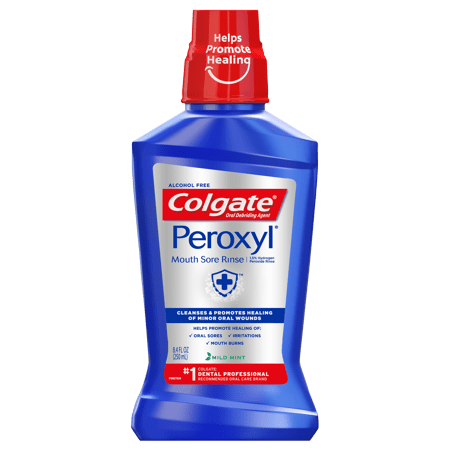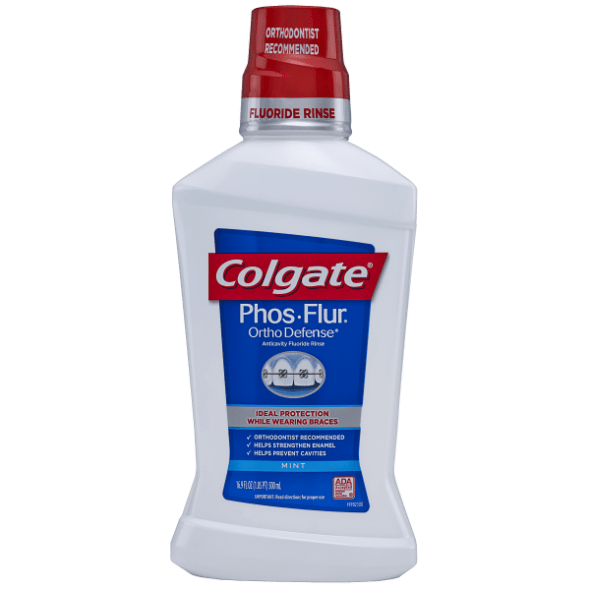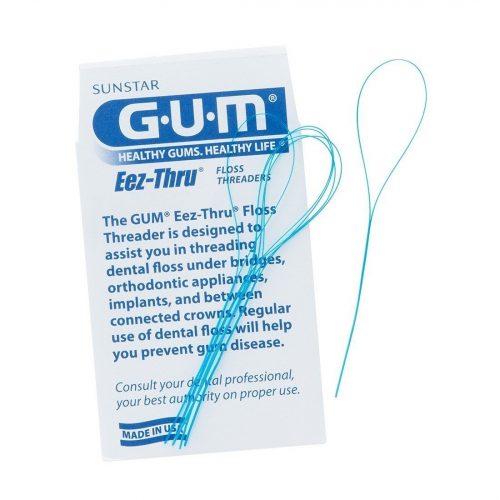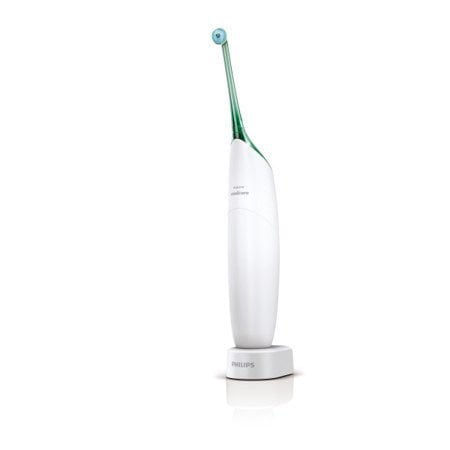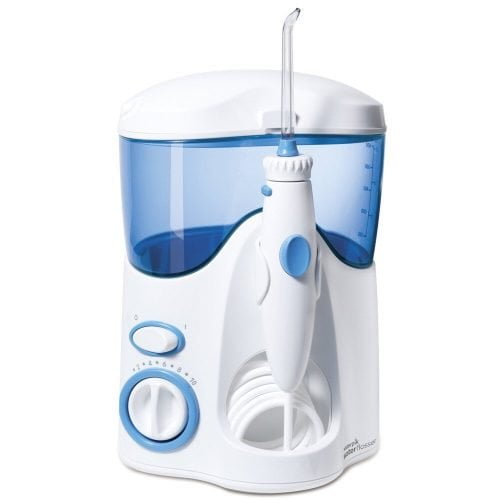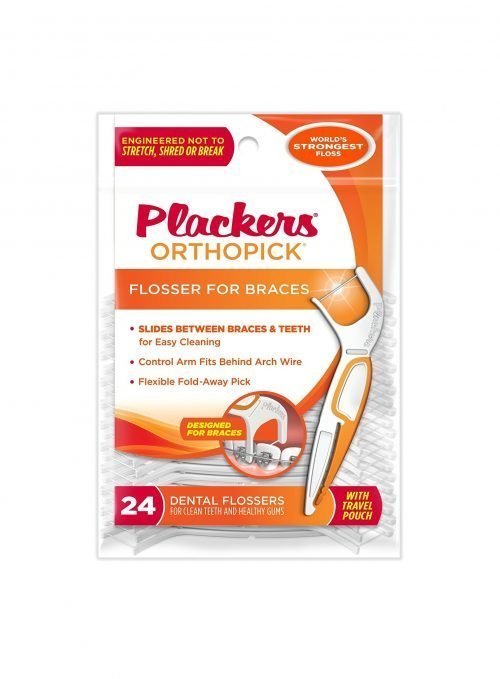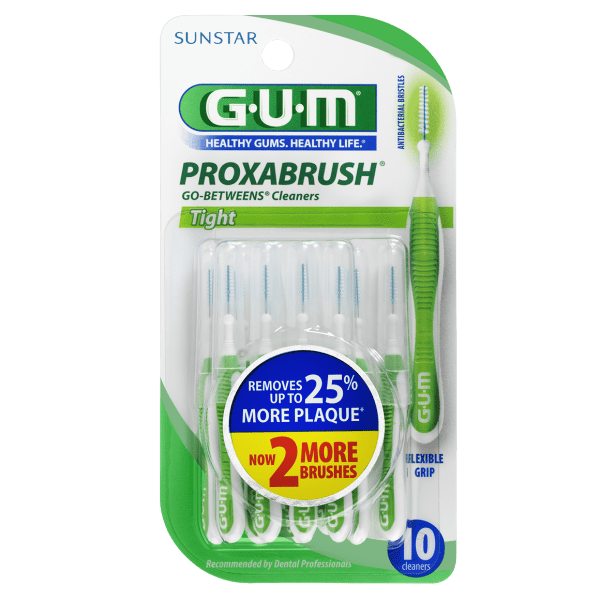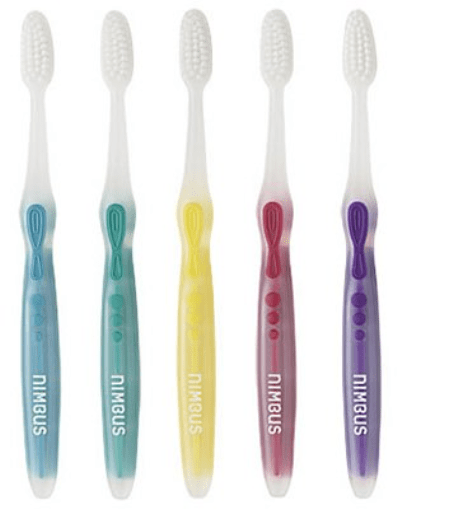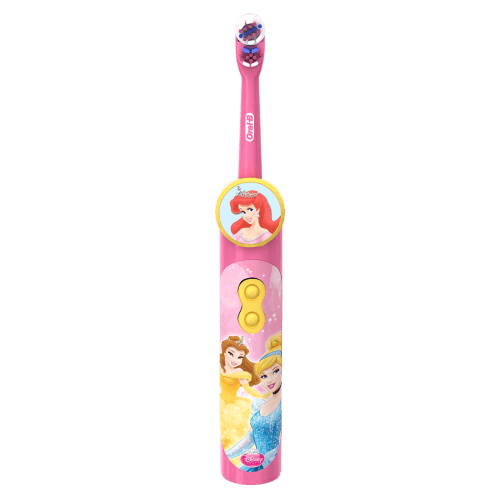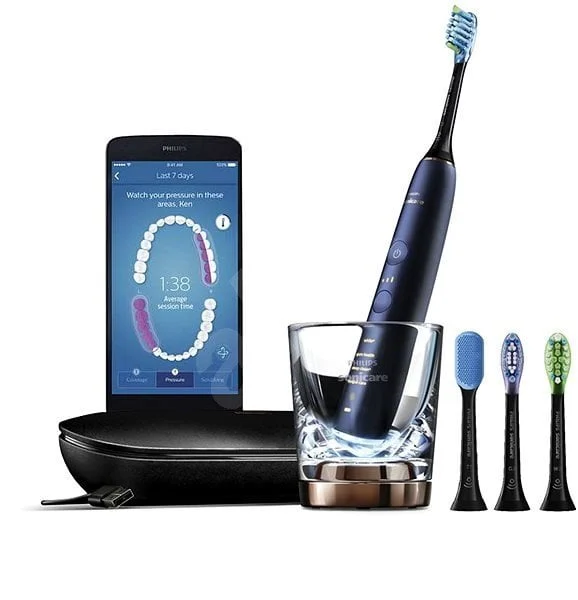Table of Contents
- Introduction to Oral Hygiene and Orthodontics
- Understanding the Risks: Oral Health Challenges with Orthodontics
- Essential Oral Hygiene Tools for Orthodontic Patients
- Brushing Techniques with Braces: A Step-by-Step Guide
- Flossing with Orthodontic Appliances: Techniques and Tips
- Maintaining Oral Health: Diet and Habits
- Regular Dental Check-Ups: An Integral Part of Orthodontic Care
- Daily Maintenance Practices for Optimal Oral Health
- FAQs on Oral Hygiene and Orthodontic Treatment
- Key Takeaways on Maintaining Oral Health with Orthodontics
Introduction to Oral Hygiene and Orthodontics
The journey to a straightened and corrected smile through orthodontic treatment is one of transformative significance. It involves the use of appliances such as braces or aligners to adjust misaligned teeth, rectify bite issues, and improve overall dental functionality. However, this journey brings forth an imperative challenge—maintaining impeccable oral hygiene.
Orthodontic appliances, while beneficial for structural dental correction, introduce a complex landscape in the mouth. The brackets, wires, and bands associated with braces, as well as the snug-fitting nature of aligners, can complicate routine oral care practices. They create additional surfaces and spaces where food particles can become trapped and plaque—a sticky film of bacteria—can accumulate. This habitat is conducive to bacterial growth, as it provides the necessary factors of stagnation and protection from regular cleaning mechanisms.
In the presence of orthodontic devices, the tools and techniques for oral hygiene must be adapted. Traditional methods of brushing and flossing, though still foundational, require augmentation to navigate the nooks and crannies introduced by these appliances. Without meticulous care, patients are prone to encounter dental health complications such as tooth decay, which manifests as cavities, and gingival issues, ranging from mild gingivitis to more severe forms of periodontitis.
The importance of oral hygiene in the context of orthodontic treatment cannot be overstated. Good oral health practices play a dual role—not only do they protect against detrimental conditions, but they also enhance the outcome of the orthodontic treatment. It is a common misconception that the orthodontic appliances alone are responsible for a perfect smile; in reality, the success of these treatments is inextricably linked to the health of the teeth and gums they are correcting.
Therefore, the purpose of this article is to serve as a guide and educational resource. It is designed to equip those undergoing orthodontic treatment with the necessary knowledge and techniques to maintain optimal oral hygiene. By understanding the intricacies of caring for teeth with braces or aligners, individuals can ensure that their path to a corrected smile is as healthy and efficient as possible. Proper care will mitigate the risks of oral health complications and secure the foundation upon which a beautiful and enduring smile can be built.
Understanding the Risks: Oral Health Challenges with Orthodontics
Orthodontic treatments are a marvel in the correction of dental misalignments and bite disorders, promising patients not only an enhanced aesthetic but also improved oral function. However, the very presence of orthodontic appliances like braces, which consist of brackets and wires, or clear aligners, can present considerable challenges to maintaining oral hygiene.
The Potential Risks to Oral Health with Orthodontics
Orthodontic appliances, by their design, disrupt the natural smoothness of the dental surface. Brackets affixed to the teeth and the wires that connect them introduce nooks and crannies that can become safe havens for food particles and bacteria. These crevices are difficult to clean, allowing plaque – a soft, sticky film containing millions of bacteria – to accumulate. Plaque is the main culprit in oral health issues because it harbors bacteria that produce acids after feeding on the sugars in our diet. These acids can attack the enamel, leading to demineralization and eventually, cavities.
Aligners, while removable and less intrusive than traditional braces, can also contribute to oral health problems if not managed properly. They cover the teeth entirely, which can trap sugars and acids against the tooth surface if oral hygiene is not meticulous, accelerating tooth decay. Additionally, since aligners must be worn for a significant part of the day, any lapse in cleaning before reinsertion can foster bacterial growth.
Food impaction is another common problem in orthodontic treatment. The spaces between wires and brackets can trap large food particles, which can lead to gingival inflammation and contribute to the development of periodontal disease if not removed efficiently.
The Common Oral Health Problems
The most prevalent oral health issues that can arise from poorly managed orthodontic care include:
Tooth Decay: As the acidic by-products of plaque attack the tooth enamel, the risk of developing cavities increases significantly, particularly around the brackets where plaque can be harder to remove.
Gingivitis: Plaque accumulation along the gum line can cause inflammation of the gums, characterized by redness, swelling, and bleeding, a condition known as gingivitis.
Periodontitis: If gingivitis is left untreated, it can progress to periodontitis, a more severe gum disease that affects the tissues and bones that support teeth, potentially leading to tooth loss.
White Spot Lesions: These appear as white marks on the tooth surface and are signs of early decay, often resulting from plaque accumulation around braces.
Bad Breath: The presence of excess bacteria due to trapped food and plaque can also result in halitosis or chronic bad breath.
The Consequences of Neglecting Proper Hygiene Practices
Neglecting oral hygiene during orthodontic treatment can lead to extensive dental work beyond the original scope of the orthodontic objectives. Treatment for cavities may require the temporary removal of appliances, thereby prolonging the orthodontic treatment. Severe cases of tooth decay could lead to root canals or even extractions. Gum diseases can also cause the gums to recede and affect the stability of the teeth, potentially compromising the results of the orthodontic treatment.
Additionally, the aesthetic outcomes of orthodontic care can be marred by issues such as white spot lesions, which may remain even after the braces are removed, requiring further cosmetic treatments to rectify.
Given these risks, it is evident that effective cleaning techniques are not just beneficial but crucial for the health of the teeth and gums throughout the course of orthodontic treatment. It is the consistency and effectiveness of the daily oral hygiene routine that ultimately determines the health of the oral environment and the success of the orthodontic journey. To manage these challenges, orthodontic patients must be equipped with the right tools and techniques for effective oral care – a toolkit that not only preserves oral health during treatment but also ensures the longevity and success of the orthodontic outcome.
Essential Oral Hygiene Tools for Orthodontic Patients
Maintaining oral hygiene with orthodontic appliances requires a targeted approach, and the success of this regimen relies heavily on using the right tools. Each instrument in the orthodontic hygiene toolkit is designed to address the unique challenges posed by braces or aligners. Here is a comprehensive list of the essential tools for orthodontic patients and how they contribute to the effectiveness of cleaning:
Orthodontic Toothbrush: These toothbrushes have bristles arranged in a V-shape, tailored to fit around orthodontic brackets and wires. The design allows for the bristles to clean both above and below the brackets, ensuring the removal of plaque and food debris from the tooth surface and appliance. Electric toothbrushes with orthodontic heads are also highly effective due to their ability to produce more brush strokes than manual brushing.
Interdental Brushes: Small brush heads designed to clean between teeth and around braces, interdental brushes are instrumental in dislodging food particles and plaque from those hard-to-reach areas, especially under the wires and around the bands.
Water Flosser: A water flosser uses a stream of pulsating water to remove plaque and food particles from between teeth and along the gum line. For orthodontic patients, it is particularly beneficial as it can access areas below the wires and between brackets with minimal effort.
Floss Threaders: Floss threaders are a simple yet effective tool used to guide dental floss under the wires of braces. They resemble a needle threader and are essential for ensuring that flossing isn’t neglected during orthodontic treatment.
Orthodontic Wax: Although not a cleaning tool per se, orthodontic wax can be applied to brackets and wires to prevent them from causing irritation to the soft tissues of the mouth during the initial adjustment phase or when new wires are placed. This ensures comfort, which is important for maintaining a thorough oral hygiene routine.
Fluoride Rinse: A fluoride mouthwash can help strengthen tooth enamel and prevent demineralization around brackets where plaque accumulation can be significant. It should be used after brushing and flossing to provide an additional layer of protection against cavities.
Plaque Disclosing Tablets: These are chewable tablets that color the plaque on teeth, revealing areas that require more thorough cleaning. They can be an educational and insightful tool for orthodontic patients, highlighting sections that might be missed during routine brushing and flossing.
Tongue Scraper: A tongue scraper or cleaner helps remove bacteria and food debris from the tongue, which can contribute to bad breath and an increased bacterial load in the mouth.
Antibacterial Mouthwash: Use of an antibacterial mouthwash can reduce the bacterial population in the oral cavity, hence assisting in the prevention of gingivitis and periodontal disease.
Dental Floss: Waxed dental floss tends to glide more easily between teeth and braces and is less likely to shred compared to unwaxed floss. When used with a floss threader, it can ensure that interdental cleaning is as effective as possible.
Selecting the right tools is only half the battle; understanding and implementing their use correctly is what ultimately maintains oral health during orthodontic treatment. Each tool serves a particular purpose, and when used in conjunction, they form a comprehensive cleaning system that minimizes the risk of dental issues associated with orthodontic appliances. Regular replacements of these tools—such as changing toothbrushes or brush heads every three months, and replenishing floss and interdental brushes as needed—also play a role in their effectiveness. By integrating these tools into their daily hygiene practices, orthodontic patients can safeguard their dental health while achieving the ultimate goal of a perfect smile.
Moving forward from the essential tools, we will next offer a thorough step-by-step guide to brushing teeth with braces. This will include brushing angles, the type of toothbrush to use, the motion and duration of brushing, as well as pointers for navigating around brackets and wires to ensure no area is left unclean.
Brushing Techniques with Braces: A Step-by-Step Guide
Brushing your teeth when you have braces requires a meticulous and systematic approach to ensure the braces, teeth, and gums are kept clean and healthy. Here’s a detailed step-by-step guide to brushing teeth with braces:
Step 1: Preparation
Rinse Your Mouth: Begin by rinsing your mouth with water. This step helps to loosen and remove larger food particles stuck in your braces and teeth.
Choose the Right Toothbrush: Use an orthodontic toothbrush or a soft-bristled brush with a small head. For electric toothbrushes, opt for orthodontic heads designed to navigate around brackets and wires.
Step 2: Brushing the Gumline
45-Degree Angle: Position the brush at a 45-degree angle to the gums on each tooth. This angle allows the bristles to clean just under the gumline where plaque tends to accumulate.
Small Circular Motions: Gently move the brush in small circles along the gumline, ensuring that you cover each tooth’s surface.
Step 3: Cleaning Around Brackets
Above the Bracket: Angle the brush downward to clean the area above the bracket. Brush from the top of the bracket down to the wire with several gentle strokes.
Below the Bracket: Angle the brush upward to reach the area underneath the bracket. Move from the bottom of the bracket to the top, covering the entire surface.
Brush the Bracket: Gently brush directly over the front of the bracket using a circular motion.
Step 4: Brushing Each Tooth
Outer Surfaces: Start by brushing the outer surfaces of your teeth using a small circular motion. Ensure you brush around all parts of the brackets and bands.
Inner Surfaces: Move to the inner surfaces of your teeth next, maintaining the same circular motion and angle to clean effectively.
Chewing Surfaces: Don’t neglect the tops of your teeth—the chewing surfaces. Brush them using back and forth strokes.
Step 5: Brushing the Wires
Cleaning Underneath: Carefully brush underneath the wires. Take your time to work your way along all the wires, ensuring you dislodge any trapped food particles.
Step 6: Attention to Detail
Duration: Spend at least two minutes brushing, dividing your mouth into quadrants and spending 30 seconds on each.
Order: Some find it helpful to start brushing in the same order to make sure no area is forgotten. You could start from the upper right, move to the upper left, then go to the lower left, followed by the lower right.
Step 7: Rinse and Inspect
Rinse Thoroughly: After brushing, rinse your mouth again to flush away any dislodged particles.
Inspect Your Teeth and Braces: Look in the mirror to check if there are any remaining food particles or plaque. Pay extra attention to the areas around the brackets and wires.
Step 8: Clean Your Toothbrush
Rinse Your Brush: Clean your toothbrush under running water, ensuring all toothpaste and debris is washed away.
Store Properly: Store your toothbrush in an upright position and let it air dry. Avoid covering the toothbrush or placing it in a closed container where microorganisms can grow.
Additional Tips
Brushing Frequency: Brush your teeth after every meal or snack. If you cannot brush right away, rinse your mouth with water to help dislodge particles.
Replace Your Brush: Replace your toothbrush or brush head every three months or sooner if you notice signs of wear, particularly from the brackets.
Disclosing Tablets: Consider using plaque-disclosing tablets periodically to check for plaque you might be missing. These tablets stain the plaque, making it easier to see where more attention is needed during brushing.
Patience and thoroughness are key when brushing with braces. It might take a bit longer to brush your teeth than before you had braces, but the effort is crucial for maintaining oral health and getting the best results from your orthodontic treatment. Remember, proper brushing techniques significantly reduce the risk of issues such as cavities, gum disease, and decalcification—those unsightly white spots that can form around brackets. Take the time to brush carefully and diligently, ensuring your smile is as healthy as it is beautiful.
Flossing with Orthodontic Appliances: Techniques and Tips
Flossing with orthodontic appliances is not just a recommendation—it’s a necessity. Braces create numerous nooks and crannies that can trap food and plaque, making it harder for your toothbrush to reach these areas effectively. Flossing is therefore vital for preventing decay and maintaining healthy gums throughout your orthodontic treatment. Here’s a tutorial on how to navigate flossing when you have braces, which will include using floss threaders and water flossers.
Using Floss Threaders with Braces
Floss threaders are a simple yet ingenious tool for people with braces. They act like a needle and thread for your teeth, guiding the floss through the tight spaces between the wires and the tooth surface. Here’s how to use them effectively:
Prepare the Floss Threader:
Take about 18 inches of floss and pass one end through the eye of the floss threader. Think of it as threading a needle.
Inserting the Floss:
Gently slide the stiff end of the floss threader under the archwire of your braces near the gum line.
Flossing:
Hold the floss threader in one hand and the floss with the other. Use a gentle sawing motion to slide the floss up and down against the side of each tooth and just under the gum line. Curve the floss around each tooth in a “C” shape and ensure you also floss under the wire.
Removing the Floss:
Carefully pull the floss out from between your teeth. Use the floss threader to pull the floss from under the wire when finished.
Repeat:
Repeat this process for each tooth. Remember to use a clean section of floss for each gap to avoid transferring plaque.
Water Flossers: A Modern Flossing Technique
Water flossers are increasingly popular among individuals with braces because they are easy to use and extremely effective at dislodging food particles and plaque. Here’s how to integrate a water flosser into your daily routine:
Fill the Reservoir:
Fill the water flosser’s reservoir with lukewarm water to make the process more comfortable.
Choose the Right Tip:
Use an orthodontic tip if available. These are specially designed to clean around braces.
Setting the Pressure:
Start at a lower pressure setting and gradually increase it to your comfort level. The goal is to clear debris without causing discomfort or bleeding.
The Flossing Process:
Lean over the sink and place the tip in your mouth. Close your lips slightly to prevent splashing but allow water to flow from your mouth into the sink. Turn on the device, and move the tip around all teeth surfaces and braces. Aim the tip at the gumline, and pause briefly between teeth to allow the water to flush out any trapped food.
Cleaning the Wires and Brackets:
Direct the stream along the wires and around the brackets. Make sure to clean both the inside and outside surfaces of the teeth and along the gumline.
Tips to Enhance Your Flossing Experience
When flossing with braces, patience and persistence are key. Here are additional tips to make the process smoother and more effective:
Time Management: Floss at a time of day when you are not rushed. Perhaps flossing before bed is ideal as you won’t be hurrying to get out the door.
Regular Replacements: Replace your floss threader regularly. If you use a water flosser, replace the tips as per the manufacturer’s recommendations, generally every three to six months.
Gentleness is Paramount: Be gentle to avoid damaging the wires and brackets of your braces. This applies to both traditional flossing and the use of a water flosser.
Flossing Posture: Use a mirror to see what you’re doing. Good lighting and a direct view can make a big difference.
Flossing Aids: Don’t hesitate to use waxed floss if traditional floss is too difficult to slide between teeth with tight contacts.
Rinsing Post-Flossing: Rinse your mouth after flossing to clear away any loosened particles.
Consistency: Floss at least once a day to maintain optimal oral hygiene. Remember, flossing with braces is about frequency and consistency as much as technique.
Following these techniques will ensure that flossing with braces is not only possible but also effective. It’s a critical component of oral hygiene that will contribute significantly to the success of your orthodontic treatment. Flossing diligently will keep your gums healthy and can prevent the onset of dental issues that may otherwise complicate your treatment. Embrace the routine, and it will pay dividends in the form of a beautiful, healthy smile once your braces come off.
Maintaining Oral Health: Diet and Habits
Orthodontic appliances, be it braces or aligners, serve as the tools for achieving an aligned and healthy smile. While these devices are effective in straightening teeth, they can also become repositories for food particles and plaque if not cared for properly. Consequently, what you consume and the habits you engage in can significantly influence the condition of both your orthodontic appliances and your oral health. Understanding the dietary choices and daily habits that affect your orthodontic treatment is vital for ensuring successful outcomes.
Impact of Diet on Oral Hygiene with Orthodontics
Foods to Avoid
The brackets and wires of traditional braces are delicate and can easily be damaged. Here are some categories of foods to consider avoiding during your treatment:
Sticky Foods:
Caramel, gum, and toffee can adhere to braces and pull at the wires and brackets. They can also lodge beneath the braces, leading to increased plaque buildup and tooth decay.
Hard Foods:
Hard candies, nuts, and ice cubes can break wires and dislodge brackets. Additionally, biting into hard fruits and vegetables like apples and carrots can cause similar damage. Instead, these should be cut into small pieces and chewed with the back teeth.
Sugary Foods and Drinks:
These can lead to plaque accumulation and tooth decay. With braces, it becomes more challenging to clean teeth effectively, making sugary substances particularly harmful.
Acidic Foods and Beverages:
Foods and drinks with high acidity, such as citrus fruits and soda, can erode tooth enamel, especially around the brackets where it’s harder to clean.
Safe and Beneficial Foods
On the other hand, there are plenty of foods that are safe to eat with orthodontic appliances and can even enhance your oral health:
Dairy Products:
Cheese, yogurt, and milk are high in calcium and phosphates, which can help remineralize teeth and strengthen enamel.
Lean Proteins:
Chicken, fish, tofu, and eggs are not only safe for braces but also provide essential nutrients that support oral health.
Whole Grains:
Soft whole grain breads and pasta are less likely to cause damage to braces and contain B vitamins that help keep gums healthy.
Fruits and Vegetables:
Soft fruits like bananas and steamed vegetables are easy to eat with braces and provide necessary vitamins and minerals for maintaining oral health.
Modifying Daily Habits for Orthodontic Care
Certain daily habits can affect the integrity of orthodontic appliances and impede treatment progress. Here’s a look at which habits to change or avoid:
Chewing on Non-food Items:
Habits such as chewing on pencils, pens, or fingernails can bend wires or break brackets. Awareness and finding alternative stress relievers can help break this habit.
Improper Brushing and Flossing:
Orthodontic treatment requires more meticulous oral hygiene practices. Investing time to brush around every bracket and floss thoroughly every day is essential.
Skipping Orthodontic Appointments:
Regular visits to your orthodontist are crucial for adjustments and monitoring progress. Failing to attend appointments can extend treatment time.
Using Teeth as Tools:
Opening packages, ripping tape, or biting off tags with your teeth can damage orthodontic appliances and your teeth. It’s important to use appropriate tools instead.
Playing Contact Sports without a Mouthguard:
If you engage in sports, especially contact sports, wearing a mouthguard can protect your braces and teeth from injury.
Neglecting to Rinse After Meals:
Rinsing with water after eating can help dislodge food particles that may be stuck in and around your braces, reducing the risk of plaque buildup.
Maintaining Oral Health with Conscious Choices
Your dietary choices and daily habits play a pivotal role in maintaining oral health during orthodontic treatment. By avoiding certain foods and changing detrimental habits, you can protect your braces and ensure that your treatment is as effective and as comfortable as possible. Always consult with your orthodontist for tailored advice to fit your specific treatment plan and dietary needs. With the right care and attention, your journey with orthodontic appliances will lead to a healthier, straighter smile upon their removal.
Regular Dental Check-Ups: An Integral Part of Orthodontic Care
While adhering to a rigorous at-home oral hygiene routine is paramount for those with orthodontic appliances, it is only part of the equation in maintaining oral health throughout the course of treatment. Regular dental check-ups play an equally indispensable role. These visits are crucial for several reasons, and understanding their importance is essential for anyone undergoing orthodontic care.
Firstly, professional cleanings performed during dental check-ups are far more thorough than what can be achieved with home care alone. Dental hygienists use specialized tools designed to remove tartar — hardened plaque that cannot be brushed or flossed away. Tartar accumulation is a significant concern for orthodontic patients, as braces create numerous nooks and crannies that can trap food particles and plaque, making effective removal challenging. These professional cleanings prevent the proliferation of bacteria that can lead to cavities and gum disease, ensuring that your orthodontic treatment is not compromised by preventable oral health issues.
Beyond cleanings, regular dental visits provide an opportunity for comprehensive oral examinations. Dentists assess not only the health of teeth and gums but also monitor the progress of the orthodontic treatment. They can detect early signs of demineralization or white spot lesions, which are early indicators of tooth decay, particularly around brackets and bands. Early intervention is critical in these instances, as orthodontic patients are at an increased risk of such complications.
Additionally, these check-ups allow for the dentist and orthodontist to collaborate closely. While the orthodontist focuses on the alignment of the teeth and bite, the dentist concentrates on overall oral health. This professional partnership is beneficial for patients, as any concerns can be addressed promptly and treatment plans can be adjusted accordingly.
X-rays are another component of regular dental visits that should not be overlooked. These diagnostic images can identify issues that are not visible during a physical examination, such as decay between teeth, the status of the bone that supports the teeth, or any other abnormalities. This is particularly important for orthodontic patients, as the movement of teeth during treatment can affect the surrounding bone and tissues.
The professional guidance received during regular dental check-ups is invaluable. Dentists can provide personalized advice on oral hygiene techniques and recommend products that may be beneficial specifically for orthodontic patients. Furthermore, these visits are an opportunity for patients to ask questions and learn more about the care of their teeth with braces or other appliances.
Lastly, routine dental appointments are important for the psychological reassurance they offer. Knowing that a professional is regularly monitoring your oral health and the progression of your orthodontic treatment can provide peace of mind and reinforce the commitment to good oral hygiene practices at home.
Regular dental visits during orthodontic treatment are not just beneficial; they are integral to the health and success of the treatment. They complement daily hygiene practices by providing professional cleanings, comprehensive examinations, and expert guidance, all of which are crucial for preventing oral health issues and achieving the desired treatment outcomes. Regular appointments allow both the dentist and orthodontist to monitor and maintain oral health, ensuring that the end result of orthodontic treatment is a beautiful and healthy smile.
With a solid understanding of the value of regular dental check-ups during orthodontic care, it’s essential to integrate this practice into your dental maintenance routine. This proactive approach to oral health complements the detailed hygiene practices discussed next, ensuring a holistic approach to oral care during orthodontic treatment.
Daily Maintenance Practices for Optimal Oral Health
Embarking on a rigorous oral hygiene routine is fundamental for individuals with orthodontic appliances to maintain optimal oral health. Discipline and consistency are key elements of this daily routine, which, when performed meticulously, can significantly mitigate the risk of oral health complications. Here is a detailed checklist to ensure that all aspects of dental care are covered for those with braces or other orthodontic devices.
Morning Routine:
Rinse with Water: Begin the day by swishing water vigorously in your mouth to loosen any food particles that might have accumulated overnight.
Brushing: Use a soft-bristled toothbrush or an orthodontic brush to clean your teeth. Apply a pea-sized amount of fluoride toothpaste. Place the brush at a 45-degree angle to the gums and gently brush in a circular motion, focusing on the area above and below the brackets. Spend at least 30 seconds on each quadrant of your mouth, ensuring a thorough 2-minute brush overall. Pay particular attention to the areas between the wires and the teeth, as well as the chewing surfaces and the inner sides of the teeth.
Flossing: Flossing once a day is essential. Use a floss threader or orthodontic flosser to maneuver the floss beneath the wires. Gently move it up and down against the side of each tooth, forming a ‘C’ shape at the gum line. This practice is vital in removing plaque and food particles where a toothbrush cannot reach.
Mouthwash: Finish the morning routine with a swish of fluoride mouthwash for 30 seconds to help reduce plaque buildup and refresh your mouth.
After Meals:
Rinsing: Always rinse your mouth with water after eating to remove food particles.
Interdental Brushing: Use an interdental brush to clean around the brackets and under the wires. Be gentle to avoid damaging the orthodontic appliances.
Evening Routine:
Brushing: Repeat the morning brushing technique to ensure all food particles and plaque that have accumulated throughout the day are removed.
Flossing: Evening flossing is critical as it clears away any food debris that may have settled in tight spaces during the day.
Mouthwash: Use a fluoride mouthwash as a final step to kill any remaining bacteria and to provide an additional layer of fluoride protection overnight.
Weekly Maintenance:
Plaque Disclosing Tablets: Once a week, consider using plaque disclosing tablets. Chew a tablet after brushing, and rinse. The colored dye will highlight areas where plaque is still present, indicating where improvement is needed in your brushing and flossing routine.
Cleaning Appliance: Orthodontic appliances such as retainers should be cleaned regularly according to the orthodontist’s instructions to prevent bacterial buildup.
Additional Considerations:
Regular Replacement: Replace your toothbrush or electric toothbrush head every three months or sooner if the bristles are frayed.
Check Appliance: Regularly inspect your orthodontic appliance for any damages or loose parts and visit your orthodontist for adjustments as scheduled or if any issues arise.
Diet: Maintain a diet that avoids sticky and hard foods that can damage braces. Opt for soft, nutritious foods and minimize sugary snacks that can increase the risk of tooth decay.
Orthodontic Check-Ups:
Professional Cleanings: Adhere to the recommended schedule of dental cleanings, usually every six months, unless otherwise advised by your dental professional.
Regular Orthodontic Visits: Attend all orthodontic appointments for adjustments and monitoring of your treatment progress.
This checklist should serve as a cornerstone for your daily oral hygiene practice, fostering a disciplined approach to maintaining the health of your teeth and gums during orthodontic treatment. By adhering to this routine, you can play an active role in ensuring the success of your orthodontic care and in achieving a healthy, beautiful smile.
FAQs on Oral Hygiene and Orthodontic Treatment
Orthodontic treatment represents a significant investment in your dental health and appearance. As beneficial as it is for straightening teeth and correcting bites, it also complicates oral hygiene routines due to the additional nooks and crannies that can harbor food and plaque. To help you navigate these challenges, we have compiled a list of frequently asked questions (FAQs) about maintaining oral hygiene with orthodontic appliances.
FAQs on Oral Hygiene and Orthodontic Treatment
Q: How should I adjust my brushing technique when I have braces?
A: Brushing with braces requires more attention to detail to ensure that all areas around the brackets and wires are cleaned effectively. Use a soft-bristled brush or an orthodontic toothbrush and fluoride toothpaste. Angle the brush at 45 degrees to clean above and below the brackets. Brush gently but thoroughly in a circular motion, covering all surfaces, and take your time to focus on the areas around the orthodontic hardware. Brushing should take at least two minutes, twice daily.
Q: What are the best dietary practices to follow during orthodontic treatment?
A: To protect your braces and oral health, avoid sticky, chewy, or hard foods that could damage the appliance or become trapped. Opt for softer foods that are easier to chew and clean off your teeth. Reduce your intake of sugary and acidic foods and drinks, as they can lead to tooth decay and erosion. Always rinse your mouth with water after meals to dislodge any food that may be caught in the braces.
Q: Which tools are most effective for cleaning around brackets and wires?
A: Besides a regular toothbrush, interdental brushes are excellent for getting into the small spaces between brackets and wires. Orthodontic flossers or floss threaders can assist with flossing, making it easier to navigate around braces. A water flosser can also be a valuable addition to your oral hygiene routine as it can help flush out food particles and plaque from hard-to-reach areas.
Q: How often should I visit the dentist for cleanings during my orthodontic treatment?
A: Maintain your routine dental cleanings and check-ups every six months, although your dentist or orthodontist may recommend more frequent visits depending on your specific situation. Professional cleanings are essential for removing plaque and tartar buildup that can be challenging to reach with braces.
Q: Can I still get dental sealants while wearing braces?
A: Yes, dental sealants can be applied to the chewing surfaces of the molars to prevent decay during orthodontic treatment. They are a protective coating that can help keep these areas free of plaque, particularly important as cleaning can be more challenging with braces.
Q: Is an electric toothbrush better for oral hygiene with orthodontic appliances?
A: An electric toothbrush can be beneficial for patients with orthodontic appliances due to its consistent motion and typically smaller brush heads that can access tight spots around braces. Some models even come with specialized orthodontic brush heads designed to clean around brackets and wires more effectively.
Q: What is the role of fluoride in oral hygiene during orthodontic treatment?
A: Fluoride strengthens the enamel, helping to prevent cavities. It is especially important during orthodontic treatment as the risk of tooth decay increases. Use fluoride toothpaste and a fluoride mouthwash, and your dentist may also recommend additional fluoride treatments during your regular check-ups.
Q: Should I avoid whitening products while I have braces?
A: It’s best to avoid using whitening products while braces are on your teeth. These products may not whiten underneath the brackets, leading to uneven coloring once the braces are removed. If you are interested in whitening your teeth, discuss this with your orthodontist and consider waiting until after your orthodontic treatment is completed.
Q: How do I deal with discomfort caused by my braces during oral hygiene routines?
A: If you experience discomfort, warm saltwater rinses can help soothe sore gums. Ensure you are using soft-bristled brushes and gentle motions when brushing. If a specific area is causing persistent discomfort, contact your orthodontist for adjustments to the appliance.
Q: Can I use chewing gum with braces?
A: Chewing gum, especially if it’s sticky and sugary, is not recommended with braces as it can stick to and damage the wires and brackets. If you need to freshen your breath, try using sugar-free gum specifically designed to be safe for braces or consider other alternatives like breath mints or mouthwash.
Q: Are there any specific foods I should eat to improve my oral health during orthodontic treatment?
A: A diet rich in fruits, vegetables, lean proteins, and dairy products can promote oral health. Foods high in calcium and phosphorus, such as cheese and nuts, can help remineralize and strengthen tooth enamel. Also, crunchy fruits and vegetables with high water content can help clean your teeth naturally.
Addressing these questions and concerns is an essential part of managing oral hygiene with orthodontic appliances. Remember to consult with your orthodontist or dentist for personalized advice and to ensure that your oral care routine is effective and appropriate for your specific treatment.
Key Takeaways on Maintaining Oral Health with Orthodontics
In the grand scheme of orthodontic treatment, the emphasis on oral hygiene cannot be overstressed. To ensure the health of your teeth and gums and the ultimate success of your orthodontic endeavor, you must remain vigilant about your oral care routine. The presence of orthodontic appliances adds a layer of complexity to what might otherwise be a straightforward practice of brushing and flossing.
Embarking on a strict regimen of oral hygiene when under orthodontic care is a formidable defense against the potential threats posed to dental health. The complexities of navigating around brackets and wires demand dexterity and the use of appropriate tools. While the toothbrush, be it manual or electric, remains the frontline warrior in this daily battle, adjunctive implements such as interdental brushes and floss threaders provide the necessary reinforcement. These tools are specially designed to access the hard-to-reach areas that are shielded by the components of the orthodontic devices.
Water flossers, too, can play a pivotal role in the maintenance of oral hygiene. Their stream of pulsating water dislodges food particles and plaque that might have escaped the sweep of a toothbrush or floss. This action is gentle on the gums and effectively cleans areas that are susceptible to the accumulation of harmful substances. The addition of plaque-disclosing tablets to one’s oral hygiene arsenal offers a visual aid, coloring the plaque and making it easier to identify and target areas that require extra attention during cleaning routines.
The diet adopted during orthodontic treatment can either support or undermine oral health. Foods that are hard, sticky, or excessively sugary pose a risk to both the integrity of the orthodontic appliances and the health of the teeth. A nutritious, balanced diet not only protects the hardware but can also fortify tooth enamel, bolster gum health, and aid in the overall defense against decay.
Regular dental check-ups are non-negotiable and serve a dual purpose. They allow for the professional cleaning of teeth, reaching deposits of tartar that evade daily cleaning efforts, and provide an opportunity to evaluate the health of the teeth and gums, making early intervention possible where necessary. It is during these visits that the dental professional can also supply guidance tailored to the patient’s unique needs and circumstances.
The daily maintenance practices outlined throughout this article must be adhered to with consistency and precision. Brushing at least twice a day with a soft-bristled brush or an orthodontic brush, flossing daily using suitable aids, and incorporating the use of mouthwash and other supplemental hygiene products form a comprehensive oral care routine. This routine must be maintained with discipline, as it forms the backbone of oral hygiene during orthodontic treatment.
As the journey of orthodontic treatment progresses, patients must remain mindful of the critical role they play in maintaining their oral health. The equipment and techniques provided are but tools; their effectiveness rests in the hands of the individuals who wield them. The ultimate responsibility for safeguarding dental health during this time falls on the patient, facilitated by adherence to the guidelines of dental professionals. Through diligent care, the dual goals of a beautifully aligned smile and robust oral health are not just attainable but expected.
Oral health during orthodontic treatment is a dynamic interplay between professional care and personal diligence. It requires understanding the risks, embracing the tools, maintaining proper diet and habits, and committing to regular dental visits. With this robust understanding and commitment, the significance of maintaining oral health throughout orthodontic treatment becomes clear, ensuring both the integrity of the appliances and the longevity of the orthodontic results.
Some of our favorite oral hygiene products
